Introduction
Pentax has replaced last year’s mid-range K-30 with a more conventionally styled model. As with its predecessor, the new weather-sealed K-50 has a stabilized 16-MPix CMOS sensor with improved image processing and sensor sensitivity of up to ISO 51,200. At $699 body only or $777 complete with 18-55mm f/3.5-5.6 kit lens, the K-50 has a number of promising features for enthusiasts and semi-professionals, which include continuous shooting up to a maximum of 6fps, a glass pentaprism with 100-percent viewfinder coverage, stainless steel chassis and support for AA type batteries (using an optionally available adaptor).
With users wanting to combine video capture along with stills photography,the camera also has extensive movie capabilities with both 1080p and 720p resolutions and options to capture at 30, 25 and 24 fps (additional 60 and 50fps also available at 720p).
With an overall DxOMarkSensor Score of 79 points, the K-50 ranks 30th in our database, just ahead of the full-frame Alpha 900 and 850, and alongside others from the firm including the APS-C format K 01 and last year’s K-30.
As a result individual metric scores are very good for an APS-C format camera. With a very high Portrait score of 23.7 bits, and wide dynamic range of 13Evs, in good lighting conditions the K-50 can capture images with nuanced color and a quality very close to that of the best full-frame sensors.
In low light, APS-C format cameras still can’t compete with their full-frame rivals but the K-50 still achieves a very good score (ISO 1120), which is on a par with rival models.
Pentax K-50 vs Pentax K-30: same sensor, same DxOMark sensor scores…
Against its predecessor the K-30, the new 2013 model achieves very similar results. Indeed, they’re close enough to confirm that the firm is using the same sensor in both models.
Although the K-50 boasts a new image processor and a higher maximum sensitivity setting of ISO 51,200, there has been no real improvement in raw noise levels over the K-30 or earlier K-5 II, which share the same sensor.
No advance over since the K-5 II is slightly disappointing when you consider that Nikon has moved on from this sensor (it was used the Nikon D7000) but it’s an excellent performer all the same.
Pentax K-50 vs NikonD5200 vs Canon EOS 700D
Compared with similarly priced offerings from rival makers, the K-50 can easily out-do the $749 (body only) Canon EOS 700D/ Rebel T5i achieving quite a substantial 18 points more in the DxOMark Sensor Score over that model. At base ISO the sensor has a Color Depth equivalent to around +1.5 stops more than the Canon, and a wider dynamic range of +1.8 Evs. The difference in Low light scores are lower, something that Canon still does relatively well with despite the older sensor architecture but even then the Pentax has close to +2/3 stop advantage.
Against the $799 (body only) 24M-Pix Nikon D5200 the Pentax sensor is good but not quite up to the best. Not only is there a pixel count advantage but the Nikon is ahead in every category. The most significant is the +0.9 Ev extra in dynamic range, though in real world use the differences are less than the figures suggest.
While perhaps the sensor in the K-50 is looking a little dated, there’s no denying it is capable of outstanding image quality. Couple that with, arguably, the more promising overall camera specification and a design aesthetic intended to suit enthusiasts and semi professionals alike and Pentax is clearly on to something.
Pentax also has one of the most tempting lens ranges with a large number of models designed specifically for APS-C format bodies. It all adds up to an enticing alternative to the usual brands and all without the usual price premium that’s often associated with switching brands.
We’re working hard on expanding the range of Pentax lenses in our database, but we’re interested to know if there are certain models that you would like to see reviewed first. Please leave your recommendations in the comments section below.


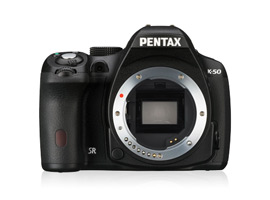



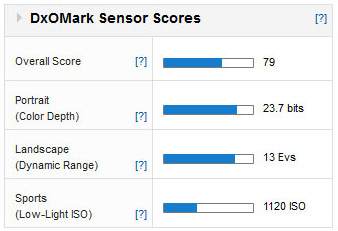
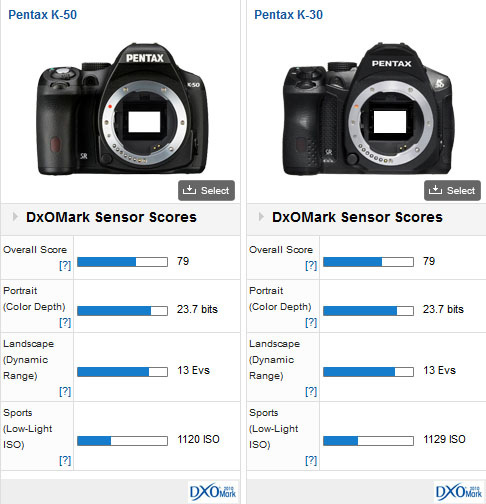
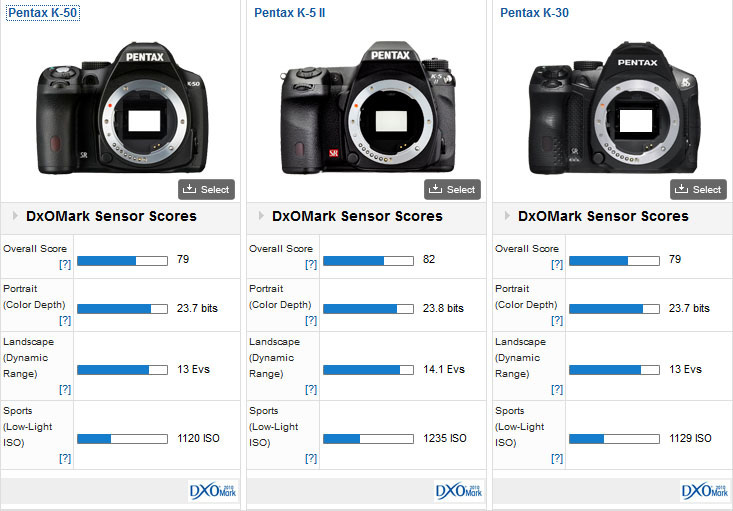
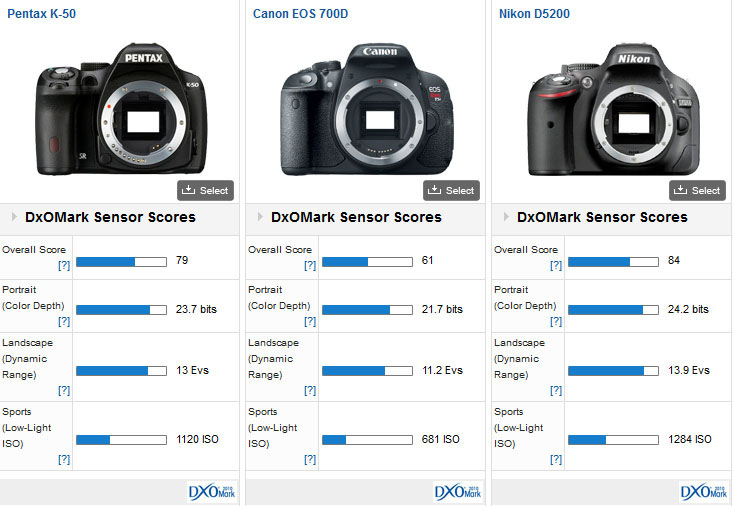
DXOMARK encourages its readers to share comments on the articles. To read or post comments, Disqus cookies are required. Change your Cookies Preferences and read more about our Comment Policy.